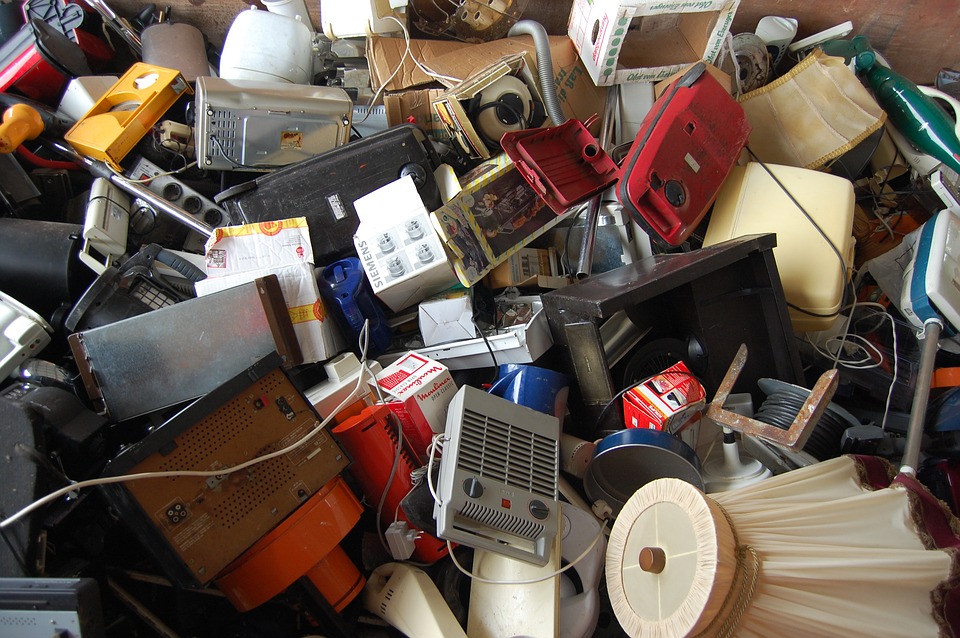Most of the things that we consume in our daily life is made out of non-renewable resources and these materials are increasingly getting scarce as time goes by. With the increase in waste generation caused in turn by an increase in consumption, the pressure on existing supply chain is forcing the suppliers to dig deeper for precious metals or make new artificial materials. Electronic waste or E-waste is relatively a novel addition to the ever-growing hazardous waste stream. Indian IT prowess attracts global business, but it also generates huge amounts of electronic waste often scavenged by children in dangerous conditions. At the same time, it is responsible for the generation of the bulk of E-waste or Waste Electrical and Electronic Equipment (WEEE) in India.
In With more than 100 crore mobile phones in circulation, nearly 25 per cent end up in e-waste annually. India, which has emerged as the world’s second largest mobile market, is also the fifth largest producer of e-waste, discarding roughly 18.5 lakh tonnes of electronic waste each year. Production’ of e-waste is likely to increase by nearly three times, from the existing 18 lakh metric tons (MT) to 52 lakh MT) per annum by 2020 at a compound annual growth rate (CAGR) of about 30%. Almost 70% of e-waste material, followed by telecommunication equipment (12%), electrical equipment (8%) and medical equipment (7%). Other equipment, including household e-crap account for the remaining 4%. The manufacturing of electrical and electronic equipment (EEE) is one of the emerging global activities. The main factors identified to be responsible for the increased consumption and productions of electrical and electronic equipment are rapid economic growth, coupled with urbanization and industrialization.
Among the 10 largest e-waste generating States, Maharashtra ranks first followed by Tamil Nadu, Andhra Pradesh, Uttar Pradesh, West Bengal, Delhi, Karnataka, Gujarat, Madhya Pradesh and Punjab. Among the top ten cities generating e-waste, Mumbai ranks first followed by Delhi, Bengaluru, Chennai, Kolkata, Ahmedabad, Hyderabad, Pune, Surat and Nagpur.
E-Waste Composition
The various parts / materials / composition of e-waste may be divided broadly into six categories such as Iron and steel, used for casings and frames.
• Non-ferrous metals, especially copper used in cables, and aluminium
• Glass used for screens, windows
• Plastic used as casing, in cables and for circuit boards
• Electronic components
Health and environmental impact of E-waste
Most of the components in electronic devices contain lead, cadmium, mercury, polyvinyl chloride (PVC), brominated flame retardants (BFRs), chromium, beryllium etc. Long term exposure to these substances candamage the nervous system, kidney and bones and the reproductive and endocrine systems and some of them are carcinogenic.
Informal Recycling Concerns (negative)
- High-risk backyard operation-Adverse impact on environment and health.
- Environmental Hazard-Inefficient and polluting technologies used for material recovery- crude methods.
- Health hazards- Operations in small congested unsafe areas occupational.
- Loss of resources-inefficient process.
- Social Impacts-vulnerable social groups-women, children and immigrant labourers.
Legal Aspects and Policy Issues
Hazardous Waste Management and Handling Rules have been introduced recently. Many of the constituents present in e-waste are hazardous in nature. Hence in keeping with the legal provision, it is necessary to manage e-waste so that environment is properly protected.
- The Hazardous Waste (Management and Handling) Rules
- The Batteries (Management and Handling) Rules Bio-Medical Waste (Management and Handling) Rules, 1998
- The Water (Prevention and Control of Pollution) Act, 1974, amended 1988
- The Water (Prevention and Control of Pollution) Cess Act, 1971 amendment 2003 Air (Prevention and Control of Pollution) Act 1981, Amended 1987 and the Air (Prevention and Control of Pollution) Rules, 1982
- The Ozone Depleting Substances (Regulation and Control) Rules, 2000
- The Noise Pollution (Regulation and Control Rules) 2000
- The Hazardous Wastes (Management, Handling and Transboundary Movement) Rules, 2008
- The Plastics (Manufacture, Usage and Waste Management) Rules, 2009
- The E-Waste (Management and Handling Rules) 2011
Source: firstpost.com, thehindubusinessline.com, drishtiias.com, Needhidasan et al 2014 doi: 10.1186/2052-336X-12-36, MUNDADA et al 2003 doi:10.1080/0020723042000176060, Saoji -National Journal Of Medical Research
